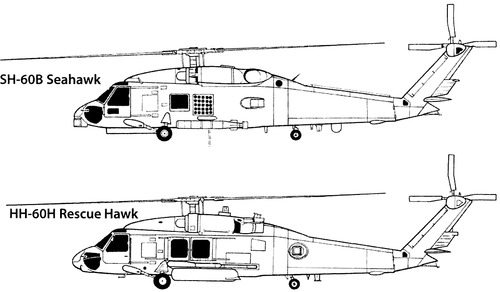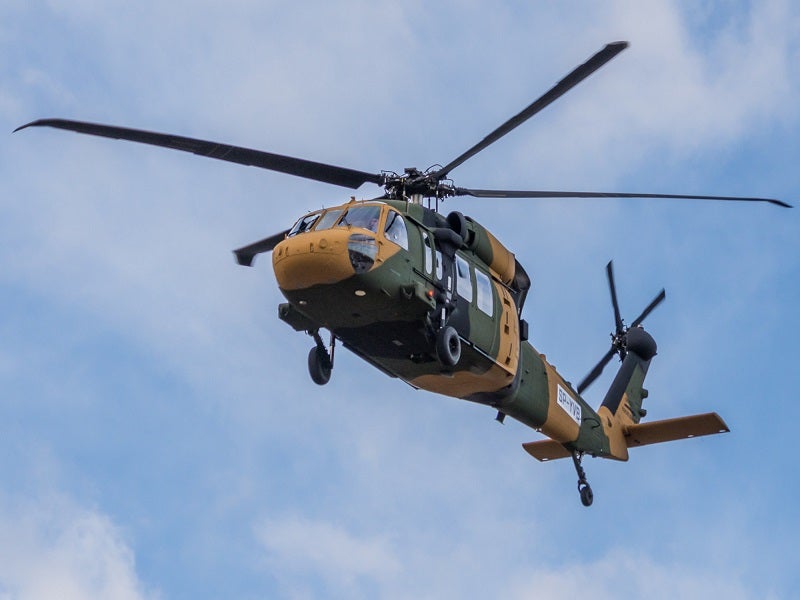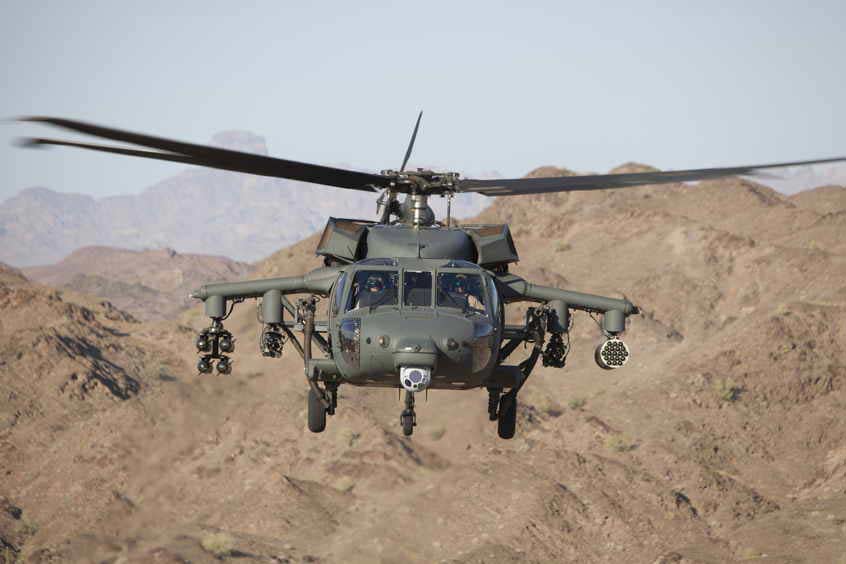Discovering the Abilities of the Sikorsky S 70: A Detailed Evaluation
Discovering the Abilities of the Sikorsky S 70: A Detailed Evaluation
Blog Article
High-Performance Multi-Role Rotorcraft Featuring Advanced Cabin Technologies and Integrated Sensor Solutions
The realm of rotorcraft modern technology has actually seen notable improvements in current times, particularly in the world of high-performance multi-role rotorcraft outfitted with cutting-edge cabin modern technologies and effortlessly integrated sensing unit systems. In the following conversation, we will explore the evolution of rotorcraft innovation, delve right into the realm of advanced cabin advancements, and take a look at the ramifications of integrated sensor systems on the operational convenience and effectiveness of modern-day rotorcraft.
Evolution of Rotorcraft Modern Technology
The advancement of rotorcraft modern technology has been marked by considerable innovations in the rules of aerodynamics, materials, and propulsion systems, shaping the capabilities and performance of modern rotorcraft. Wind resistant enhancements have actually improved the efficiency and ability to move of rotorcraft, permitting boosted rate, agility, and security throughout trip (sikorsky s 70). Advancements in materials, such as the usage of composite products and advanced alloys, have actually led to lighter yet more powerful rotorcraft frameworks, boosting total efficiency and longevity. Additionally, improvements in propulsion systems, including a lot more powerful engines and ingenious propulsion innovations, have made it possible for rotorcraft to achieve higher elevations, faster speeds, and higher payloads.
These improvements have not just changed the capabilities of rotorcraft yet have additionally broadened their applications across various industries, including armed forces, industrial, and emergency solutions. The constant evolution of rotorcraft modern technology proceeds to drive innovation in the area, pushing the limits of what is possible and shaping the future of upright flight.
Advanced Cabin Innovations
Structure upon the foundational improvements in the rules of aerodynamics, materials, and propulsion systems, the realm of rotorcraft technology currently moves emphasis towards pioneering Advanced Cabin Innovations. The assimilation of innovative technologies within the cabin setting plays an important function in enhancing the operational abilities, safety and security, and effectiveness of contemporary rotorcraft. sikorsky s 70. Advanced Cockpit Innovations include a large array of functions created to provide pilots with boosted situational understanding, streamlined information management, and instinctive control interfaces
One of the crucial advancements in cockpit design is the application of glass cabins, which change traditional analog assesses with high-resolution screens. These electronic systems use customizable designs, real-time information assimilation, and improved readability, enabling pilots to gain access to essential information at a glimpse. Moreover, advanced avionics systems, such as fly-by-wire controls and increased reality display screens, are reinventing exactly how pilots engage with the airplane, permitting specific control and enhanced decision-making capabilities.


Incorporating advanced cabin innovations not just enhances pilot performance but additionally adds to general mission effectiveness and safety and security in complicated functional environments. By leveraging advanced innovations within the cabin, rotorcraft manufacturers are setting new standards for functional excellence and objective success.
Integrated Sensor Solutions
With the development of rotorcraft innovation, the combination of sophisticated Integrated Sensing unit Solution has ended up being paramount in improving operational effectiveness and safety. These Integrated Sensor Solutions encompass a wide variety of technologies that give critical information for various features such as navigating, monitoring, targeting, and environmental surveillance. By flawlessly integrating sensing units like radars, video cameras, lidar, and infrared systems into rotorcraft, drivers can gain from enhanced situational awareness, enhanced mission capabilities, and decreased pilot work.
One key advantage of Integrated Sensor Systems is their ability to gather real-time information and supply actionable understandings to pilots and mission operators. As an example, progressed radar systems can identify and track targets over long distances, enabling early risk discovery and reliable feedback planning. Additionally, integrating infrared and electro-optical cams makes it possible for rotorcraft to carry out reconnaissance and surveillance objectives with accuracy and accuracy.
Essentially, the integration of cutting-edge sensor innovations right into rotorcraft not only boosts operational performance yet additionally adds considerably to overall mission success and team safety and security. As rotorcraft remain to evolve, the function of Integrated Sensor Systems will most certainly stay at the forefront of innovation in the aerospace market.
Operational Versatility and Effectiveness
Enhancing functional versatility and efficiency in rotorcraft is a natural progression from the combination of advanced Integrated Sensor Equipments. By leveraging the information and insights provided by these sophisticated sensor systems, rotorcraft can optimize their efficiency across various missions and settings.
Functional flexibility incorporates the ability of rotorcraft to adjust to various duties and circumstances efficiently. With sophisticated cabin modern technologies and incorporated sensing unit systems, rotorcraft can perfectly transition in between tasks such as search and rescue, medical emptying, surveillance, and extra. This versatility boosts the rotorcraft's ability to fulfill diverse functional needs without needing comprehensive reconfiguration.
Effectiveness in rotorcraft operations is essential for making the most of objective effectiveness and source use. Integrated sensing unit systems play a crucial function in boosting operational performance by providing real-time information on climate condition, surface mapping, target monitoring, and more. This information enables continue reading this pilots to make educated decisions swiftly, maximize trip paths, conserve gas, and boost overall goal performance.
Impact on Modern Aviation Operations

Furthermore, the combination of innovative sensing units facilitates enhanced objective preparation and implementation, making it possible for rotorcraft to execute a vast array of jobs with enhanced accuracy. From search and rescue procedures to airborne firefighting and police objectives, the capacities of modern-day rotorcraft equipped with sophisticated cabin technologies and incorporated sensing unit systems are unmatched.
Furthermore, the impact of these advancements expands past operational effectiveness to cost-effectiveness and sustainability. By enhancing flight routes, fuel usage, and upkeep schedules, high-performance rotorcraft geared up with advanced cabin modern technologies and sensors add to minimizing functional expenses and environmental impact, making them important possessions in contemporary aeronautics procedures.
Final Thought
Finally, the high-performance multi-role rotorcraft with advanced cabin technologies and incorporated sensor systems represents a substantial development in aviation technology. These developments boost functional adaptability and performance, ultimately affecting modern air travel operations in a favorable means. The assimilation of these sophisticated technologies permits click to read more for boosted capabilities and performance in different objective situations, showcasing the continued innovation of rotorcraft modern technology in the air travel market.
The world of rotorcraft modern technology has actually seen notable improvements in recent times, specifically in the world of high-performance multi-role rotorcraft outfitted with innovative cockpit technologies and seamlessly incorporated sensor systems. From boosted mission versatility to boosted functional effectiveness, the convergence of advanced cabin innovations and incorporated sensing unit systems has ushered in a new era of opportunities for rotorcraft applications. In the adhering to discussion, we will certainly check out the evolution of rotorcraft modern technology, dive right into the world of innovative cabin developments, and examine the ramifications of incorporated sensor systems on the functional adaptability and performance of modern-day rotorcraft.

Report this page